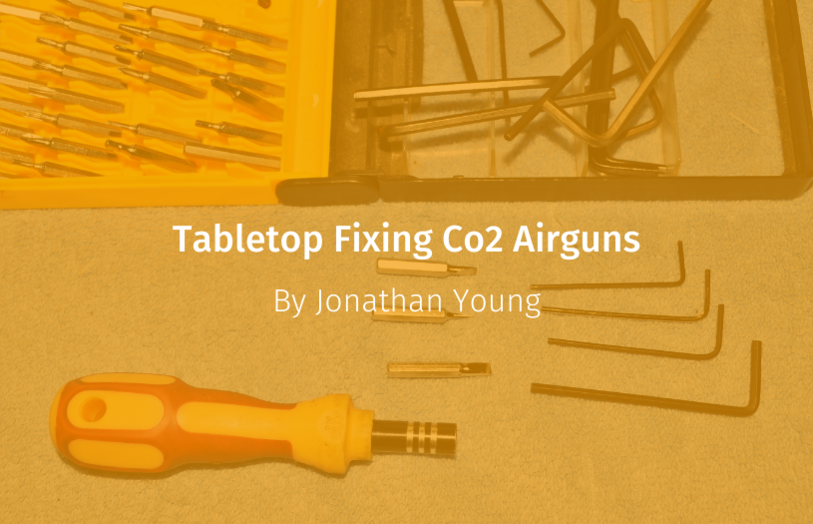
Savage Arms: Long-Range Shooting Specialists
News Events
Create a FREE business profile and join our directory to showcase your services to thousands.
Create my profile now!
Co2 airguns are great fun, but the Achilles heel has always been the seals. Re-sealing in itself is not the issue as seals can be replaced cheaply enough. The issue is it’s a total chore to dismantle most of these guns. Many have what seems like four times the parts needed inside compared to a springer. No, make that five if it’s a pistol design.
However stripping down any Co2 air rifle or pistol can be straightforward, easy even if the work is approached methodically. Easy is a relative term and all can depend on having some basic skill. Making it easier before starting is common sense. Reading up, or looking for tutorials online for any specific design can be time well spent. Looking at schematics although very useful for parts ID can in itself can be very confusing. We cannot see how these parts are placed until the frame is opened, so Youtube may be useful if a tutorial is already up there.
Keep everything in sequence
Getting some common tools together that will be needed before the start of the job then sorting these out in the order they will be needed for each specific task will make things flow better. It’s a bit like surgery really, 'cos it is! Examining the piece to see what fixings are present; are they all the same or a mix, if so what sizes? Test fitting for the right size Allen key before starting saves fiddling and having them laid out in order of need beforehand can really help. Likewise, a screwdriver set with only those sizes needed will just make the job go smoother.
If dismantling a good tip is to do this somewhere quiet. Ears will become accustomed to small noises, especially the unmistakable and unique PING sound heard as something really very important flies skyward. It’s guaranteed to happen every single time a different airgun is broken into. As the part bounces off the walls in a weird cartoon slow motion your head will try to keep pace with the part, as you say “Ohh Nooooooooo!” in even weirder slow motion. Waste paper bins are oddly a favourite stopping place for bits as is the crack between the carpet and skirting board. A magnet is a handy tool as most parts that go ping are steel. Doesn't have to be a strong one as when held parallel to the ground the tiniest part will get tugged by it. This really works, added, only if nobody vacuums the carpet in that room before you get the chance to search properly. Having to empty out a completely filled vacuum cleaner bag once just to satisfy a suspicion that a missing vital part had not been sucked up during a clean, in desperation a magnet was sought. Passing it over the pile of waste, through the toenails and dead slaters - there it was!
A coarse rough surface will catch small parts
Finding a level work surface near a good source of light such as a window is a priority. Closing all windows is advisable as once a very tiny important spring sprung straight out an open window onto the grass. Some birds really like tiny shiny objects too! In both cases, it'll be a phone call to re-order parts that were not actually needing replacement. Finding a large rough towel or old rug to lay over the work surface is a good tip. This is to catch all loose parts if they drop down. This really works and stops small components from bouncing off onto the floor.
Transfer sub-assemblies into trays away from the work area - old meat trays are great.
Supermarket plastic shallow food trays are just the job to store disassembled components, mind not the ones with drainage holes or small screws will simply disappear. Noting what hole each is removed from then laying them down in that order will speed up re-assembly. Modern Co2 air pistols are made in plastics and cast metals but they still use steel fixings. They can mash delicate screw holes in these softer bodied castings. Going back into the hole they came from, slowly and with a little dab of oil or grease to ease their way can really help avoid issues. Every dismantling job will have its own specific challenges and when some brute force is needed having bits already in trays means everything can be lifted away from the table in a microsecond. Storing parts for sub-assemblies in different trays means it'll also be easier to re-assemble each before final fitting.
You can never have enough spares
Co2 airguns are rarely assembled dry in the factory and can be filled with sticky thick greases. Sometimes grease is actually used to help line up small parts into their locations during assembly. Remember this during re-assembly. Opening up a sealed frame can mean that small greased components may get dragged away with larger parts. That's okay if the internal layout of that model is already known. Some repairers warm the frame to help soften any thick greases. The heat thins it and most parts should then stay put when the frame is pulled apart. Some repairers may prefer to see parts come away in a messy bundle, at least they know where all the parts are so they crack on regardless. Taking one’s time and learning on the go is natural. After everything is apart and the valve is resealed or partly replaced, it’s time to put everything back together again. With so many small parts getting things lined up is now paramount. At this stage, we all discover that getting things back together is the really hard part!
All this work to get at that one tiny green O ring


